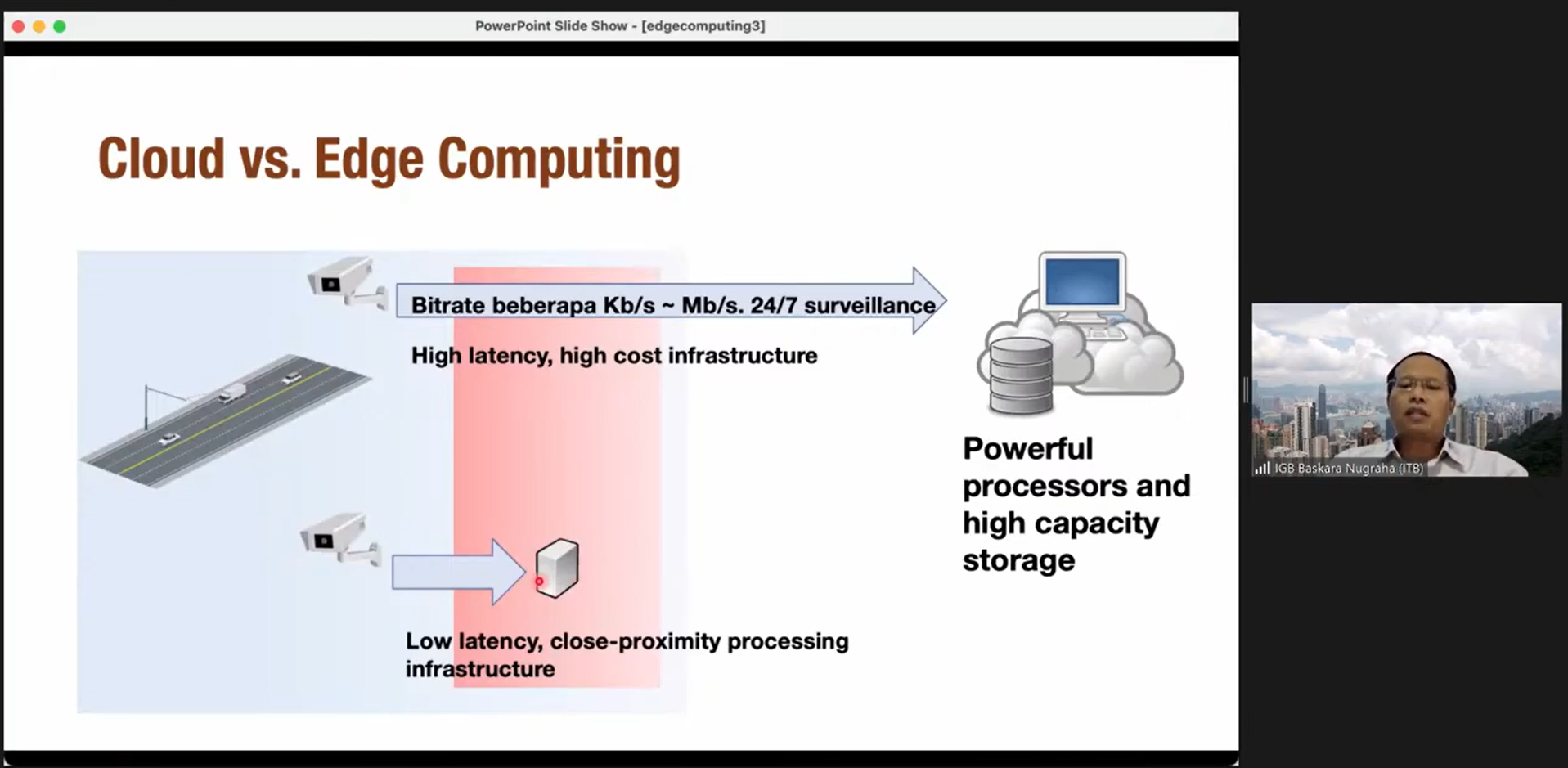Public Lecture by Informatics Technology Research Group: Empowering Edge Computing to Acquire Data
By Adi Permana
Editor Adi Permana

BANDUNG, itb.ac.id—The Informatics Technology Research Group of the School of Electrical and Informatics Engineering (STEI) ITB again held a public lecture on Thursday (8/7/2021). “Enabling the Edges” was chosen to be a discussed topic with a lecturer named I Gusti Bagus Baskara Nugraha, S.T., M.T., Ph.D. in this 12th public lecture. It discusses a paradigm in empowering edge resources to acquire data and utilizing the computing power of devices to obtain information.
Baskara told about his interest in this field which began when he took his doctoral education around 2002. Expensive computing resources at that time made him interested in finding ways to use computing facilities to do a complex job. Besides reducing costs, this low-cost/power computer can provide added value to the data received.
“We need a really powerful server, both in terms of bandwidth and processing power, so we need sufficient computer capacity. Therefore, at that time I was thinking how to use an edge router to facilitate this. Then I made protocols and so on, which became my dissertation at that time,” explained Baskara in developing video servers in 2002-2006.
Cloud computing became popular in 2006 with its facilities equipped with Artificial Intelligence (AI). This makes a variety of heavy computing quite easy and inexpensive. According to Baskara, “When there is cloud computing, everybody can do anything.” However, how to activate and use it is often forgotten. This activation is carried out with Machine Learning, Deep Learning, and Reinforcement Learning which learn patterns and unstructured data to make decisions to identify errors.
“Now the paradigm is that we use data, from that data we make the rules. The rules will be true if we use the right and quality data too.”
Cloud computing will act as a platform that receives data from sensors through the network and processes it until insight is obtained to be further utilized by applications that are actuators. When we want a fast process, we can choose edge computing that uses network devices to process data without being forwarded to the cloud platform. Portable facilities allow it to be placed near the sensor. Therefore, edge computing is considered to reduce costs and latency.
Despite offering convenience, edge computing still has some challenges for its users regarding data repositories and licensing. In addition, the device used can still make errors in data collection, which makes the results less accurate.
You can rewatch this public lecture through the official YouTube channel of the Information Technology KK ITB. Also, you can access further information about STEI ITB through the Instagram account: @stei.itb.
Reporter: Ristania Putri Wahyudi (Mathematics, 2019)
Translator: Billy Akbar Prabowo (Metallurgical Engineering 2020)

.jpg)
.jpg)
.png)
.jpg)
.jpg)


